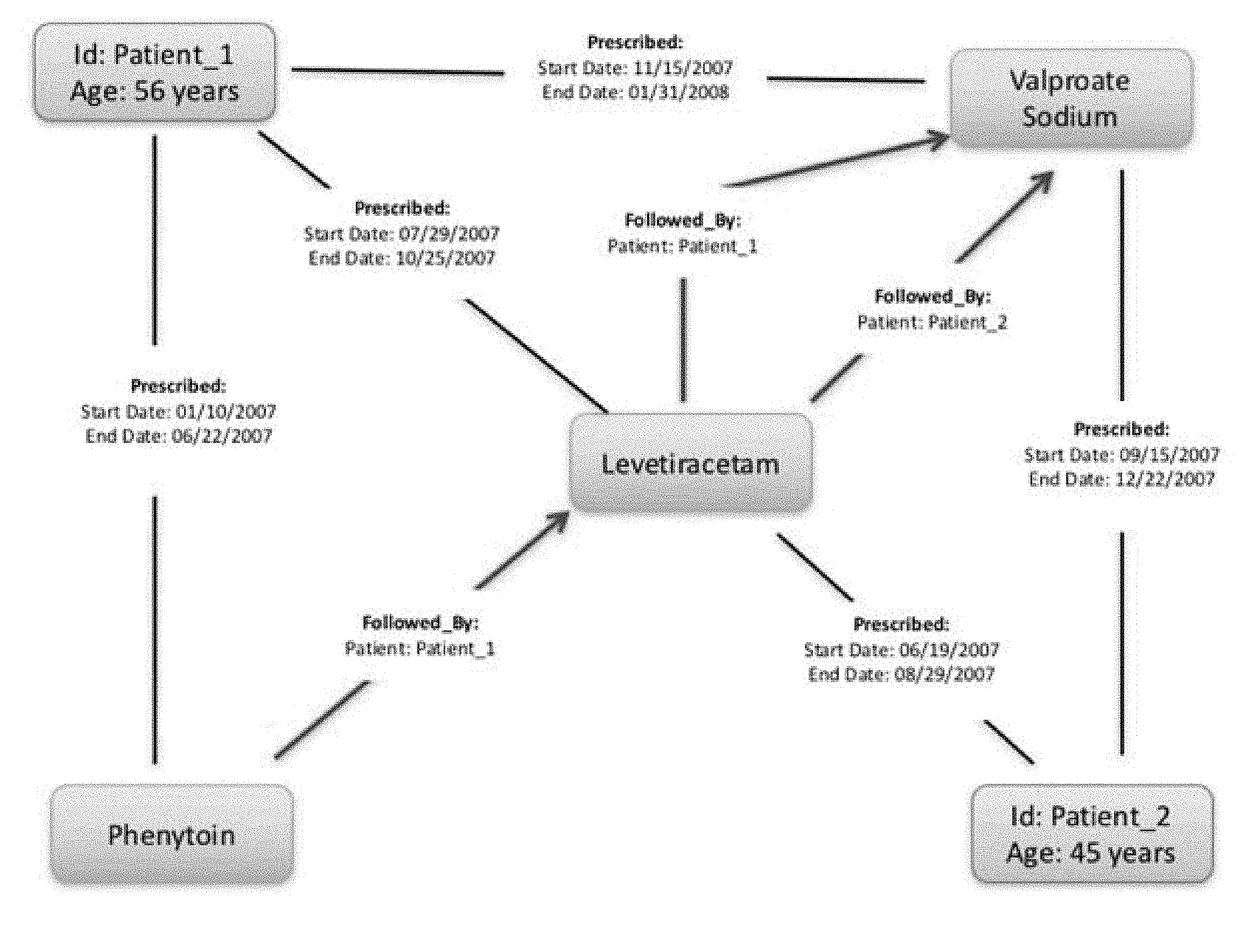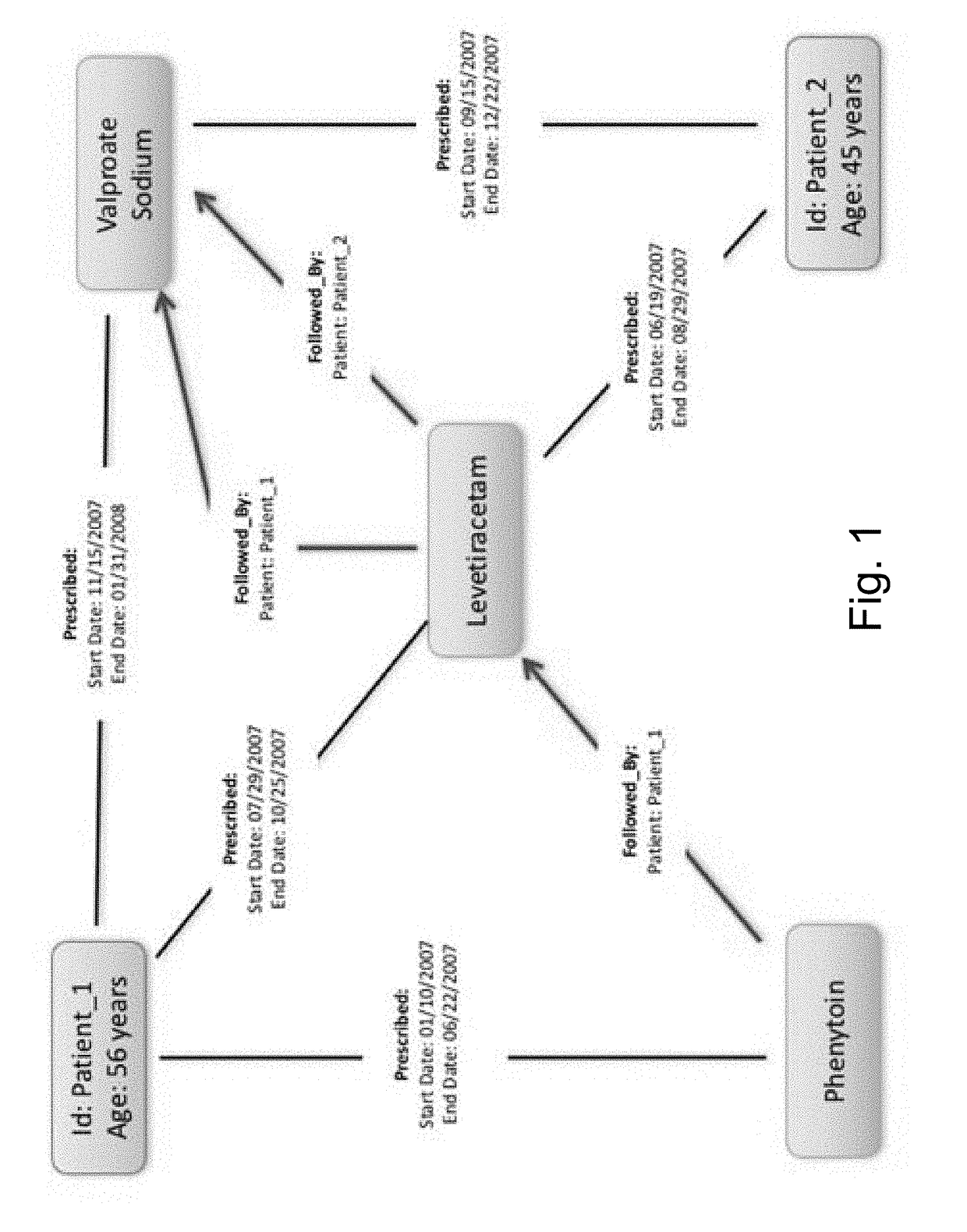Method and system for predicting refractory epilepsy status
a technology of epilepsy and refractory epilepsy, applied in the field of method and system for predicting refractory epilepsy status, can solve the problems of huge gap in understanding factors, debilitating regimens, and complications of patients suffering from this diseas
- Summary
- Abstract
- Description
- Claims
- Application Information
AI Technical Summary
Benefits of technology
Problems solved by technology
Method used
Image
Examples
Embodiment Construction
[0032]In order to provide insight into epilepsy, the present disclosure addresses the problem of epilepsy patient refractoriness by using sequential pattern mining techniques to generate frequent treatment pathways for epilepsy patients across different age groups and types of epilepsy and perform an exploratory analysis of the variations that exist in care given out to epilepsy patients. An extensive analysis of the severity of comorbidities and other medical conditions between consecutive failures in a frequent treatment pathway helps in discovering reasons driving the failure of AEDs.
[0033]Sequential pattern mining can be used for constructing epilepsy treatment pathways, which involves developing popular treatment pathways consisting of AED prescriptions as monotherapy or a polytherapy, to provide insight into how AEDs are prescribed in practice across age groups and across different types of epilepsy. These pathways are based on patterns which exist in the dataset consisting of...
PUM
 Login to View More
Login to View More Abstract
Description
Claims
Application Information
 Login to View More
Login to View More - R&D
- Intellectual Property
- Life Sciences
- Materials
- Tech Scout
- Unparalleled Data Quality
- Higher Quality Content
- 60% Fewer Hallucinations
Browse by: Latest US Patents, China's latest patents, Technical Efficacy Thesaurus, Application Domain, Technology Topic, Popular Technical Reports.
© 2025 PatSnap. All rights reserved.Legal|Privacy policy|Modern Slavery Act Transparency Statement|Sitemap|About US| Contact US: help@patsnap.com



